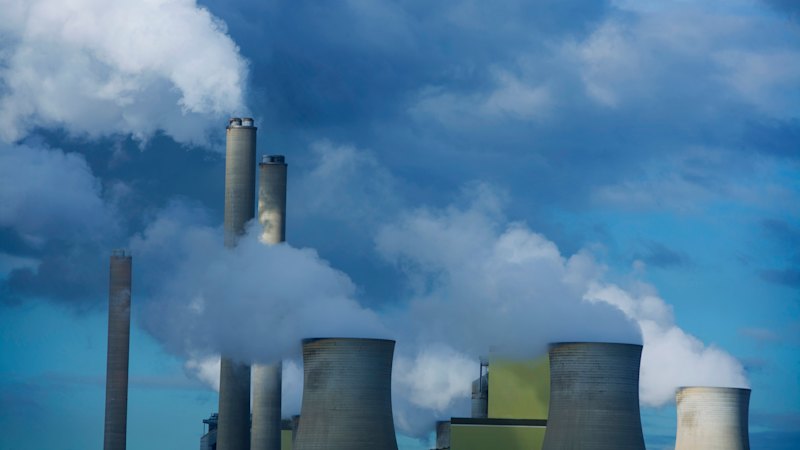
Australia’s largest energy companies have reaffirmed their commitment to the government’s 2050 net zero target, countering recent assertions from the Coalition aimed at scaling back climate action. These energy firms, which include major players such as AGL, Origin Energy, and EnergyAustralia, contend that a transition to renewable energy is essential to preventing further increases in electricity costs.
Liberal leader Sussan Ley officially abandoned the Coalition’s support for net zero on March 3, 2024, reviving the narrative that renewable energy initiatives would lead to exorbitant household expenses. Ley’s party plans to dismantle the interim climate targets set by the Labor government, eliminate incentives for electric vehicles, and extend financial support for existing coal-fired power stations or the construction of new ones.
In contrast, a forthcoming report from the Australian Energy Council reveals that the transition to a predominantly renewable energy grid is crucial for keeping energy bills manageable. The document emphasizes the urgent need for “policy certainty and stability” as Australia faces significant changes in its energy landscape. The report highlights that many coal-fired power plants are nearing the end of their operational lives, with most set to close within the next decade due to ongoing equipment failures, escalating maintenance costs, and increasing competition from renewables.
The executives from the energy sector outlined that investing in renewable energy is not only viable but also economically beneficial. “In the long run, this approach [renewables] will still be cheaper than continuing to invest in existing or new coal-fired power generation,” stated Louisa Kinnear, chief executive of the Australian Energy Council.
Transitioning away from coal is already underway, with AGL accelerating the closure of its Bayswater coal plant in New South Wales to no later than 2033. Similarly, Origin Energy has advanced the retirement of its Eraring coal plant from 2032 to 2027. These shifts reflect the industry’s recognition that outdated coal facilities must be replaced with renewable alternatives.
The industry’s position argues that the most cost-effective path for consumers involves replacing aging coal generators with reliable renewable energy sources. The executives emphasized that the transition is not without its challenges. Building new wind and solar farms, large-scale storage systems, and the necessary infrastructure to support an expanding energy grid will incur significant costs, potentially leading to temporary increases in electricity bills.
According to the Australian Energy Council, maintaining and upgrading transmission infrastructure accounts for around one-third of a customer’s electricity bill. These network costs are projected to rise significantly in the years ahead as investments are made to facilitate the transition.
The report indicates that while electricity prices are under pressure due to the imperative to replace and decarbonise aging assets, it is crucial to engage in open discussions about the financial implications. One chief executive remarked, “I think it’s the calm before the storm” regarding the anticipated costs of the energy transition.
The CSIRO estimates that a new coal-fired power plant equipped with modern emissions-reducing technology would produce electricity at a cost of between USD 111 and USD 178 per megawatt-hour. In contrast, power generated from a predominantly renewable grid would range from USD 116 to USD 165 per megawatt-hour, accounting for additional expenses related to batteries, gas, and transmission infrastructure.
Despite the higher initial costs associated with construction and adaptation, Kinnear emphasized that renewables represent one of the lowest-cost energy sources in the long run. She stated, “We need to ensure the transition is managed carefully,” underscoring the importance of balancing immediate costs with future savings.
The Coalition’s retreat from its commitment to a net zero target by 2050 and the proposed weakening of interim climate targets could violate the Paris Agreement, which Australia ratified in 2016. This shift has drawn criticism from major investors who have been investing heavily in green energy projects across the country.
Richie Merzian, chief executive of the Clean Energy Investor Group, characterized the Coalition’s stance as “material and disappointing,” but noted that the fundamentals of clean energy investment remain intact. “New generation is required, clean energy is the best path for returns, and the current government is committed to supporting that,” he stated.
Debby Blakey, chief executive of the USD 100 billion superannuation fund HESTA, emphasized the necessity of bipartisan support for climate policies. She remarked that stability in climate targets is crucial for attracting long-term investments in energy infrastructure.
As Australia navigates this complex energy transition, the dialogue surrounding costs, policies, and the future of renewable energy remains essential. The outcome of these discussions will significantly impact both consumers and the broader energy market in the years to come.






